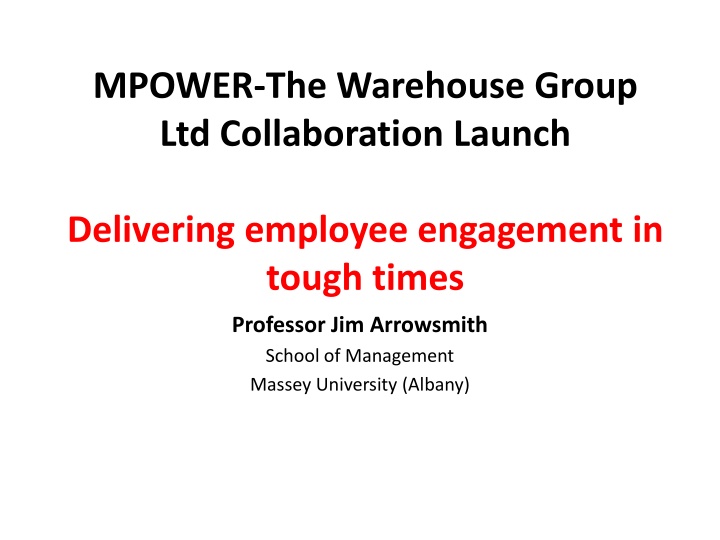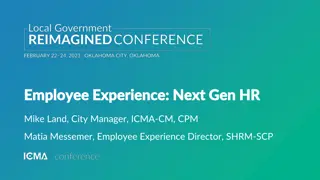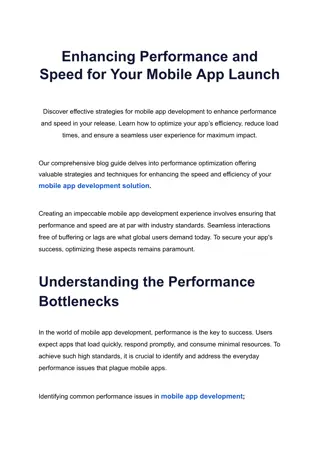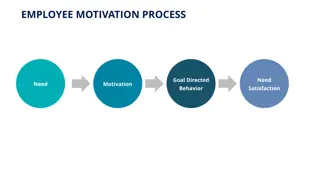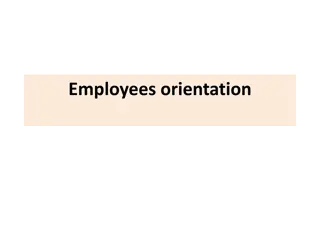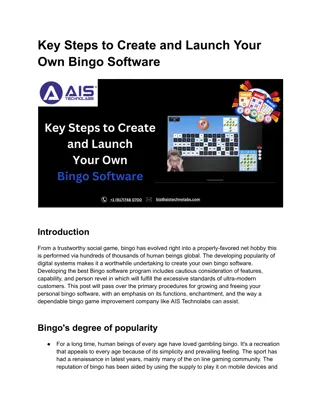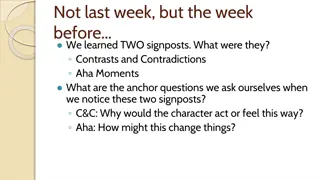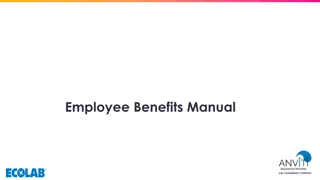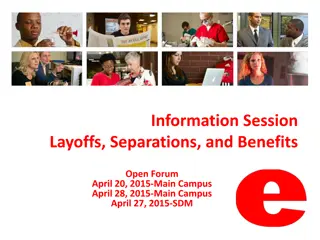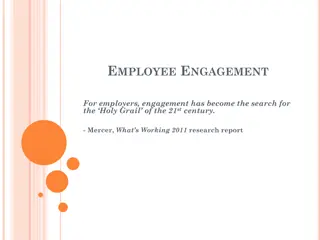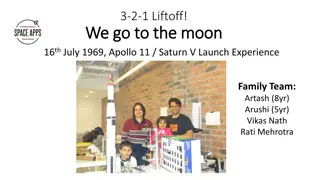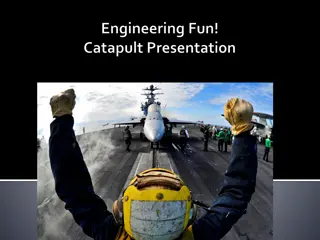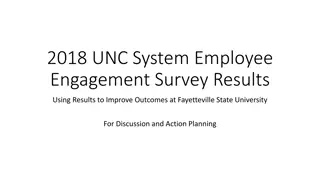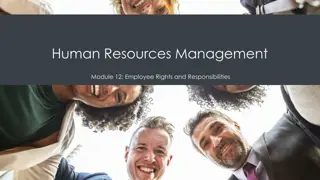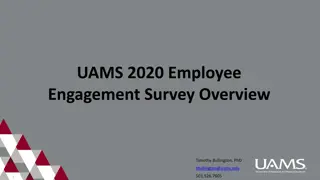MPOWER Collaboration Launch: Delivering Employee Engagement in Tough Times
"Rock star economy challenges, low employee engagement issues, and evidence of workforce disengagement. Understand the drivers of engagement and the importance of job quality and leadership. Learn about engagement strategies in action through job redesign initiatives."
Download Presentation

Please find below an Image/Link to download the presentation.
The content on the website is provided AS IS for your information and personal use only. It may not be sold, licensed, or shared on other websites without obtaining consent from the author.If you encounter any issues during the download, it is possible that the publisher has removed the file from their server.
You are allowed to download the files provided on this website for personal or commercial use, subject to the condition that they are used lawfully. All files are the property of their respective owners.
The content on the website is provided AS IS for your information and personal use only. It may not be sold, licensed, or shared on other websites without obtaining consent from the author.
E N D
Presentation Transcript
MPOWER-The Warehouse Group Ltd Collaboration Launch Delivering employee engagement in tough times Professor Jim Arrowsmith School of Management Massey University (Albany)
1. Whats the problem? Rock star economy? relatively low unemployment, inflation and strong GDP growth reality? high interest rates; low per capita growth; ChCh, dairy driven Structure and agency problems small market and firms [1] poor people management [2], [3] = low investment low value added low wage low productivity - low skill economy! Low employee engagement a drag factor, especially in service sectors (labour intensive, customer facing) but one we can do something about
Evidence? [4] Around a quarter are engaged employees emotionally committed to the job, team, firm understand their goals put in high effort and performance want to stay, develop, progress Nearly two thirds are not engaged meet basic requirements of the job limited motivation and commitment (transactional) One in ten are actively disengaged self-interested, discontented, subversive 3
Drivers of EE?[5] Work Growth Support Culture autonomy, responsibility, variety opportunities to learn and develop listening, coaching, feedback trust and respect 4
So its not all about the money, money, money Job quality - work offers sense of achievement - necessary training and resources provided - offers work-life balance If you want workers to do a good job, give them a good job to do (Frederick Herzberg) Good leadership - supportive supervision - communication and voice - effective performance management (clear goals, recognition) - coaching and development a joint and consequential failure of leadership and management is the main cause of poor employee engagement (MacLeod and Clarke, 2009: 32)
Engagement in action Job redesign Delivery business: 2,300 workers at 120 sites Identified problems with engagement and effectiveness of the 180 frontline leaders GOAL (Great Operations and Leadership) initiative - job redesign, admin support to free supervisors from operational activities - focus on people management and work planning But many senior managers feared GOAL could be costly and disruptive - context of falling volumes, increased delivery points, branch rationalisations etc.
yeah, well, show me the money. All I can see is that you re changing the structure, you re adding in cost you can t bank engagement! HR Strategy (a)joint partnership between HR and Delivery Business (b)pilot initiatives to demonstrate value
Marua Road Pilot evaluation Team leader interviews revealed greater satisfaction - management and admin support - staff teamwork and performance Postie survey: How does Marua Rd. compare with previous branches? Same (%) Better (%) Communication 27 73 Teamwork 33 40 Development opportunities 73 14 Awareness of business results 20 80 Individual support 27 67 Access to team leader 47 53 As a place to work 33 40
Business Impact Review Increase Engagement = mean up from 3.6 to 4.1 Productivity = 16% Better communication, performance management Better employee relations Decrease Overtime = 50% Unit costs = 12% Complaints = 47% Absence = 46% Result: National rollout
Investing in employees Facilities Management company with 12,000 NZ staff HR concern: management style, workplace culture and performance Low literacy within the workforce is a business risk. We are a labour-intensive business. This means that the satisfaction of our clients, delivery of our service, and our reputation relies totally on our people. Without them we do not have a business (Vaughan Biggs, GMHR) Not an isolated problem: nearly half NZ workforce has difficulties with basic levels of reading, maths and communication (Adult Literacy and Life-skills survey)
Literacy project: HR rationale Improve employee confidence Signal to stakeholders that company cares Improve quality of communication Easier to implement change Better technical skills Reduce wastage, delays, errors OSH Retention and succession planning Costs and productivity Obstacles? Convince management a commercial rather than social issue Employees too initially suspicious or reticent Approach identify the problem, sell the solution and empower people to improve - evidence-based rather than compliance approach - pilots (with DoL expertise & financial support)
Taylors (laundry) pilot Focus on supervisors: 60% with level 1 or 2 literacy 66% reported higher motivation and 84% better performance better employee communication, adaptability, fewer frustrations Senior Executive Team sign off a 5 year LLN strategy Healthcare Broader focus, including numeracy, teamwork and communication skills Celebration of success, acknowledging courage and achievements
What about small firms? Allco Growing company but increasing workloads and stress planning to recruit, but HR consultant first reviewed job role and workloads Employees wrote their own job descriptions (with HR and line support) through focus groups and individual consultations Stimulated reflection and conversation on what people doing and why Employee involvement and suggestions resulted in better role clarity reallocation of duties improved efficiency and satisfaction
Mission Statement Coll Electrical is a top quality electrical service and contracting company with clients that value us. We want to maintain our current size or to achieve steady growth. We want quality staff who take ownership to exceed the customer's expectations on each and every job. We want an excellent working environment providing a future for staff with training and development. HR Advice review job descriptions and roles introduce systematic communication invest in training and development Outcomes better retention (reduced recruitment and training costs) improved customer service higher-skilled, motivated and responsible staff less stressed owner-manager!
Conclusions Maintaining employee commitment and performance in tough times and through change requires people-focused (not simply cost-focused) business leaders business savvy, politically astute HR Terms and conditions are hygiene factors: engagement derives from intrinsic and relational motivators So it can be earned even in tough times, if employers have effective recruitment and performance management systems to ensure employee-organisation fit focus on managerial leadership skills listen to, develop and involve employees
References 1. Organisation for Economic Cooperation and Development, 2011. OECD Economic Surveys: New Zealand 2011. 2. Green, R. and Agarwal, R. 2011. Management Matters in New Zealand: How Does Manufacturing Measure Up? Ministry of Economic Development Occasional paper 11/03. 3. Bentley, T., et al. 2009. Understanding stress and bullying in New Zealand workplaces. Wellington: Health Research Council of New Zealand and Department of Labour. 4. JRA Limited, 2007. Employee Engagement: Driving Organisation Performance. http://www.jra.co.nz/employeeengagementpublication.aspx 5. CIPD, 2011. Engagement for Sustainable Organisation Performance
